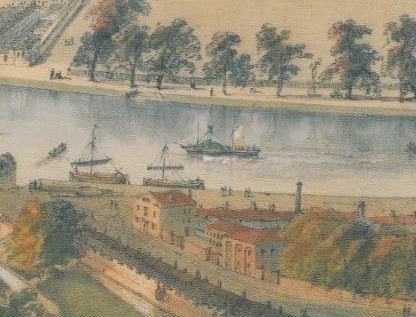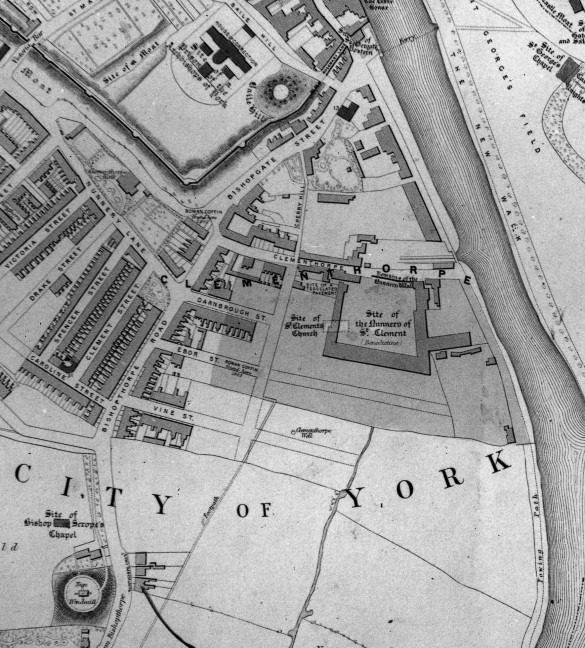



View navigation
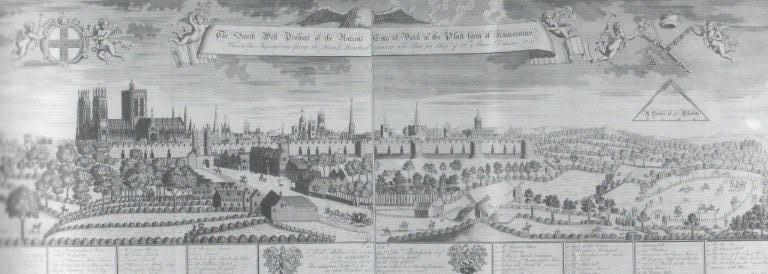 Could one of these ghostly forms be the Nun Mill? Detail taken from The South-West Prospect of the Ancient City of York with the Platform of Knavesmire, John Haynes, 1731. (Etching now owned by Ken Spelman).
Could one of these ghostly forms be the Nun Mill? Detail taken from The South-West Prospect of the Ancient City of York with the Platform of Knavesmire, John Haynes, 1731. (Etching now owned by Ken Spelman).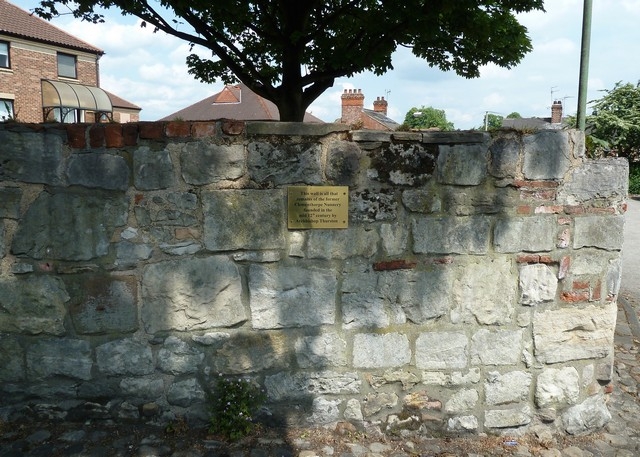 The plaque reads: “This wall is all that remains of the former Clementhorpe Nunnery founded in the mid 12th century by Archbishop Thurstan.” (Photo by John Stevens, June 2018)
The plaque reads: “This wall is all that remains of the former Clementhorpe Nunnery founded in the mid 12th century by Archbishop Thurstan.” (Photo by John Stevens, June 2018)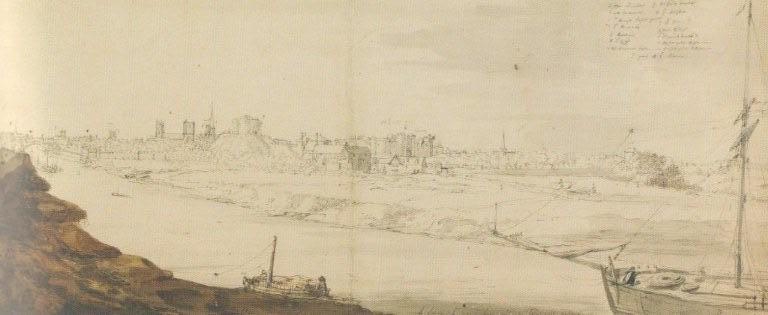 An etching[5] by Edmond Barker, dated 1718, shows us:
An etching[5] by Edmond Barker, dated 1718, shows us: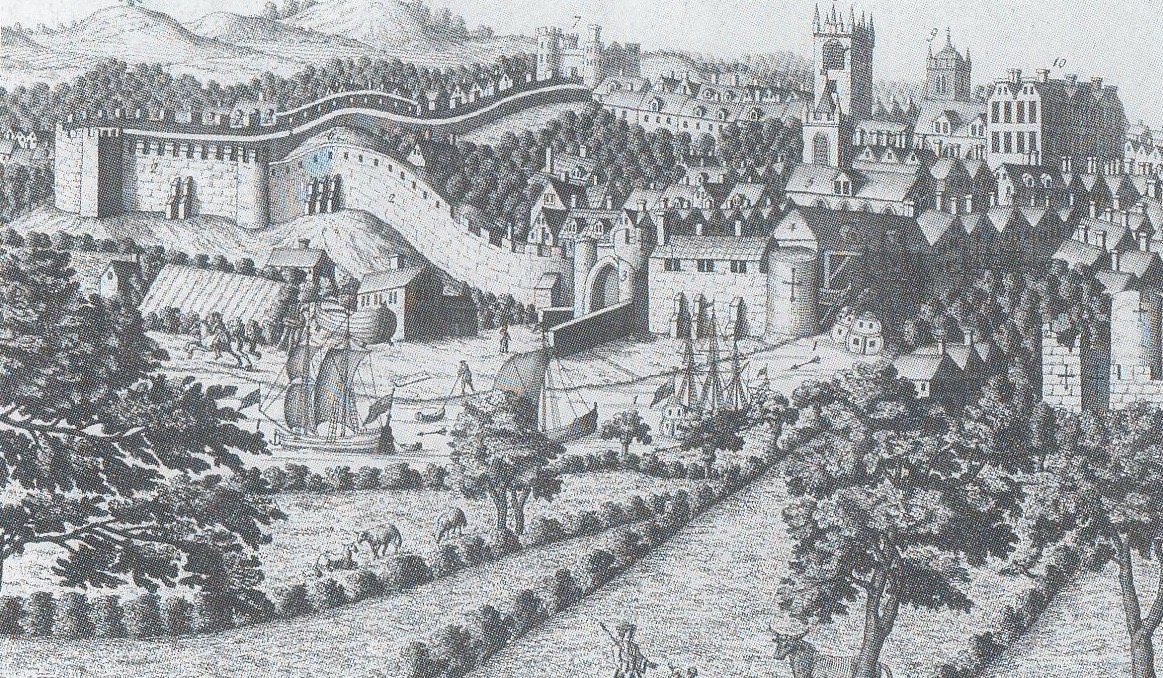
Trade/profession |
Name |
Address |
Brewer & maltsters |
John Fryer Kilby |
Clementhorpe |
Butchers |
John Fletcher |
Lived in Clementhorpe, with a stall at the Thursday Market |
Corn miller & flour merchants |
Thomas Hodgson |
Clementhorpe |
Flax spinners |
William Richardson |
Skeldergate Postern |
Sloop & boat builders |
Thomas Birch |
Skeldergate Postern |
|
|
Joseph Turpin |
Clementhorpe |
|
|
John Nicholson |
Skeldergate Postern |
Tanners |
William Richardson |
Skeldergate Postern |
Thread manufacturers |
William Richardson |
Skeldergate Postern |
Trade/profession |
Name |
Address |
Boat builders |
John Nicholson |
Clementhorpe |
|
|
Joseph Turpin |
Clementhorpe |
Flax dressers & spinners |
John Scarr & Co. Ltd. |
Clementhorpe |
Merchants |
John Scarr & Co. Ltd. |
Clementhorpe |
Shoe thread manufacturers |
John Scarr & Co. Ltd. |
Clementhorpe (1829 and 1841) |
Maltsters |
Christopher Scarr & Co. |
Clementhorpe (1841) |
Tanners |
John Scarr & Co. Ltd. |
Clementhorpe |
Shoe Thread Manufacturers |
Noddings & Co. |
Clementhorpe (1841) |
Shoe Thread Manufacturers |
Caleb Fletcher & Co. |
Clementhorpe (1841) |
